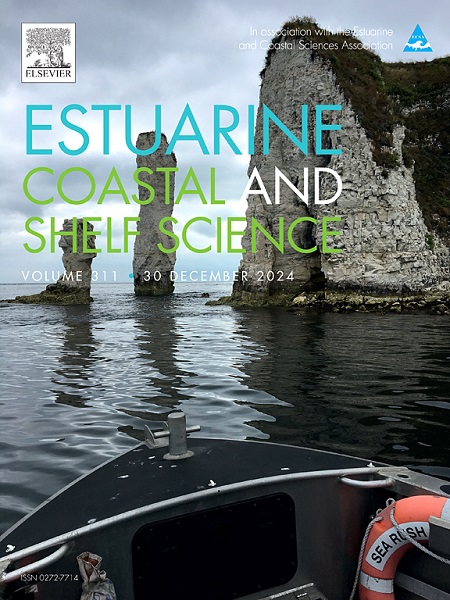Is reducing phosphorus inputs sufficient to reduce hypoxia in estuaries? The example of the Loire estuary
IF 2.6
3区 地球科学
Q1 MARINE & FRESHWATER BIOLOGY
引用次数: 0
Abstract
Coastal deoxygenation is mainly attributed to excessive nutrient and organic matter inputs from anthropogenic activities. However, although mitigation strategies have been implemented to reduce nutrient inputs, the recovery of estuarine systems has often been limited. By examining long-term data from the turbid Loire estuary, which is prone to summer hypoxia, we aimed to understand the influence of these initiatives on nutrient and dissolved oxygen levels. The data showed that despite the reduction of dissolved phosphorus in the inner estuary, summer hypoxia persisted. By integrating high spatial resolution datasets, we identified nutrient sources, particularly ammonium, in the estuarine turbidity maximum zone. Nutrient recycling is likely to maintain summer hypoxia and hinder ecosystem recovery from hypoxia. A comprehensive understanding of estuarine geochemistry and internal nutrient cycling is essential to develop targeted remediation strategies and mitigate the ongoing threat of hypoxia.
求助全文
约1分钟内获得全文
求助全文
来源期刊
CiteScore
5.60
自引率
7.10%
发文量
374
审稿时长
9 months
期刊介绍:
Estuarine, Coastal and Shelf Science is an international multidisciplinary journal devoted to the analysis of saline water phenomena ranging from the outer edge of the continental shelf to the upper limits of the tidal zone. The journal provides a unique forum, unifying the multidisciplinary approaches to the study of the oceanography of estuaries, coastal zones, and continental shelf seas. It features original research papers, review papers and short communications treating such disciplines as zoology, botany, geology, sedimentology, physical oceanography.

 求助内容:
求助内容: 应助结果提醒方式:
应助结果提醒方式:


